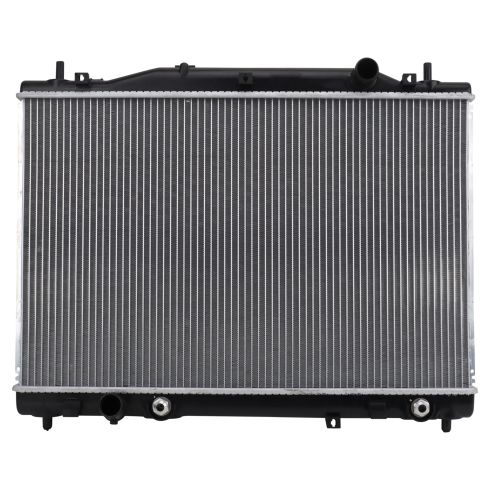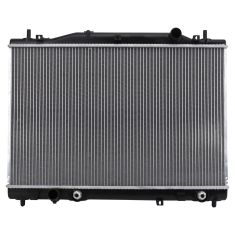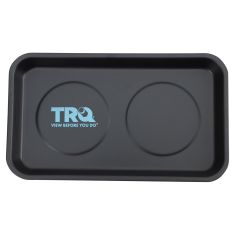1ARAD00950-2004-07 Cadillac CTS Radiator TRQ RDA82668

Replaces
2006 Cadillac CTS Radiator TRQ RDA82668

Frequently bought together
Product Reviews
Loading reviews
4.36/ 5.0
14
14 reviews
Very helpful people
June 22, 2017
Was very happy that they sent me another radiator after the first one they sent me had a crack in the bottom of it by the quick disconnect. But that one had a tiny crack in the top of it that sprayed fluid under pressure... the service man that took my call was very nice and said they would send me another radiator after they had an expert inspect it , that was 6 weeks ago and havnt heard from them or received the new, inspected radiator.
Did not last
December 8, 2017
Well I guess there was a reason it was so much cheaper then everyone. It did not last 90 days
September 13, 2018
Quality parts fast shipping and a good guide for installation.
TOTALLY SATISFIED WITH PRODUCT
December 27, 2018
Excellent delivery service. Radiator was an exact replacement fit to original manufactured part with only one minor adjustment which required removal of plastic flashing on mounting tabs holding the air conditioner radiator. Excellent price when compared with original part. Will order parts from this supplier again.
Perfect. Great
February 12, 2019
Our car had multiple options to fit, your the only ones that had the perfect fit. And the best price.
So happy to find you...
My first purchase
March 13, 2019
This was my first time ordering a part for my car. Online. I was sceptic. I looked at other prices and noticed that 1Aauto prices was the best offer. I then decided to make my purchase once I spoke to the representative who was knowledgeable about what I was interested in made the worry a lot easier. Overall the item I ordered arrived on time in good condition and I was very pleased. I will be in contact for future purchases. Thank you Susie
Wasn't right part
October 28, 2019
the part I got did not fit my car
June 16, 2021
Perfect fit, easy to install, all parts that are needed are included!
GREAT PRICE!
Speedy delivery!
August 20, 2021
It fits perfectly. Couldnt ask for a better place to buy from. And shipping is fast!!
December 15, 2021
Fast Delivery. Perfect Fit. Great Job!
March 18, 2023
It was perfect. Love 1a auto
December 13, 2023
Perfect fit, quick and easy to install.
Dose the job
July 23, 2024
great product great price
[{"url": "https://wac.edgecastcdn.net/001A39/prod/media/pNISJll75W64CYGsite/db2e0b4efc46f9f4d0ae0e0c19ea1a06_1725840054129_0.jpeg", "caption": "Almost done, it was a perfect fit! And the \" How To \" video on YouTube was absolutely invaluable."}]
September 8, 2024
I will buy all my replacement parts from you guys
Customer Q&A
Does it have a transmission cooler in this radiator?
April 1, 2019
10
Not on this year car the trans cooler is in front of the radiator. I had to disconnect the trans cooler from the radiator in order to remove the radiator
April 1, 2019
T E
10
Yes
April 1, 2019
G E
10
Yes, if this is the same radiator I ordered from A-1. It has been installed now for about eight months and I am experiencing no problems. Side note; I had to add additional transmission fluid, the shop did not put enough fluid in the transmission after installation. Make sure to check that before leaving the shop.
April 1, 2019
William S
10
Yes it does.
April 1, 2019
Paul V
10
This item will include the transmission cooler.
April 1, 2019
Emma F
10
Yes. Thats the reason I bought it. It fit great!
April 3, 2019
P H
Is this radiator the one with transmission cooler in it??? I have a 2004 caddillac cts 3.6l v6
November 2, 2021
10
Our parts are exact replacements for your vehicle's OEM parts. As long as your year, make, and model match up with our listing, these parts will directly fit and function like the originals.
November 2, 2021
Andra M
10
It has the transmission cooler. However I had trouble blowing one of my lines out and went with an aftermarket cooler mounted in front to save on transmission fluid.
November 3, 2021
Reggie G
I need this for my 05 cts-v its a manual transmission will it fit ?
January 7, 2022
10
Yes, this part will fit your vehicle.
January 7, 2022
Cristina P
10
Id assume the manual wouldnt effect the radiator at all but the one I got wasnt machined properly and after 3 radiators ended up having to pay gm to put an oem one on. Up to you. The problem was in the transmission lines that go in the bottom of the radiator kept popping off randomly while driving. Tried 3 different radiators.
January 14, 2022
Nicholas B
Cadillac is a registered trademark of General Motors Company. 1A Auto is not affiliated with or sponsored by Cadillac or General Motors Company.
See all trademarks.











